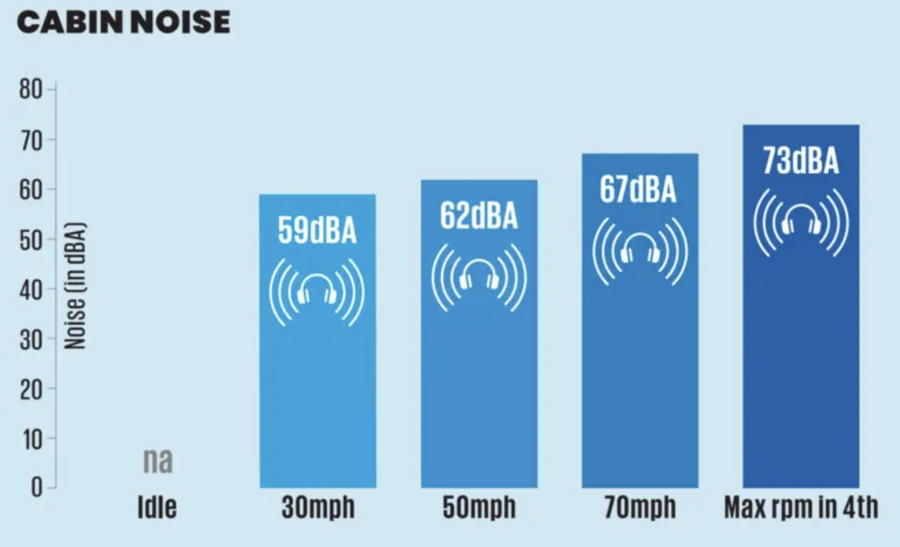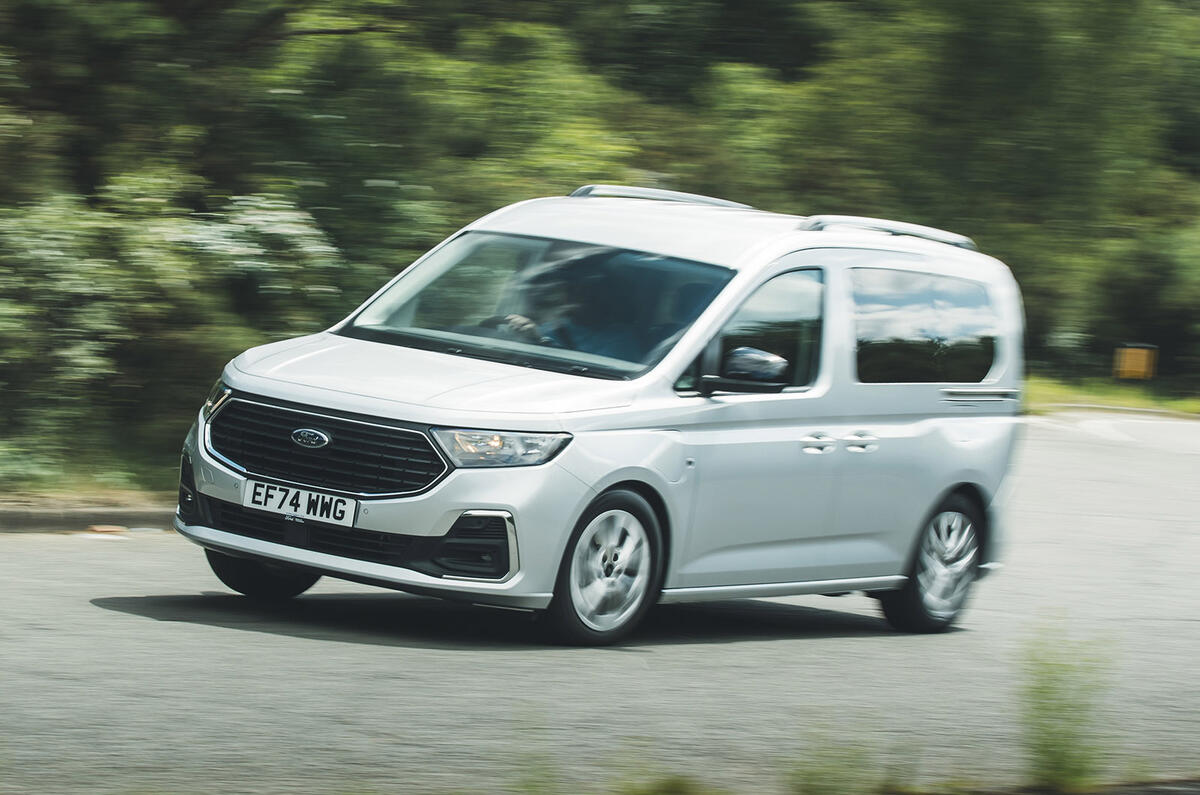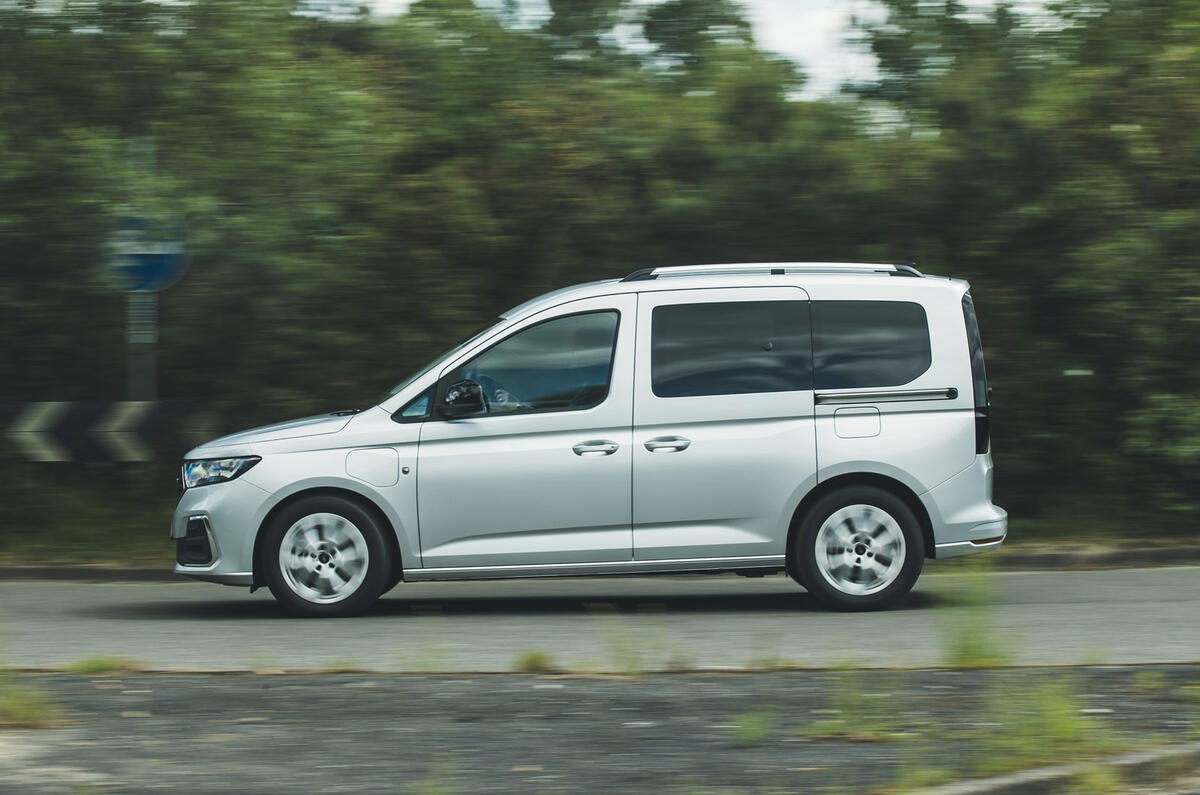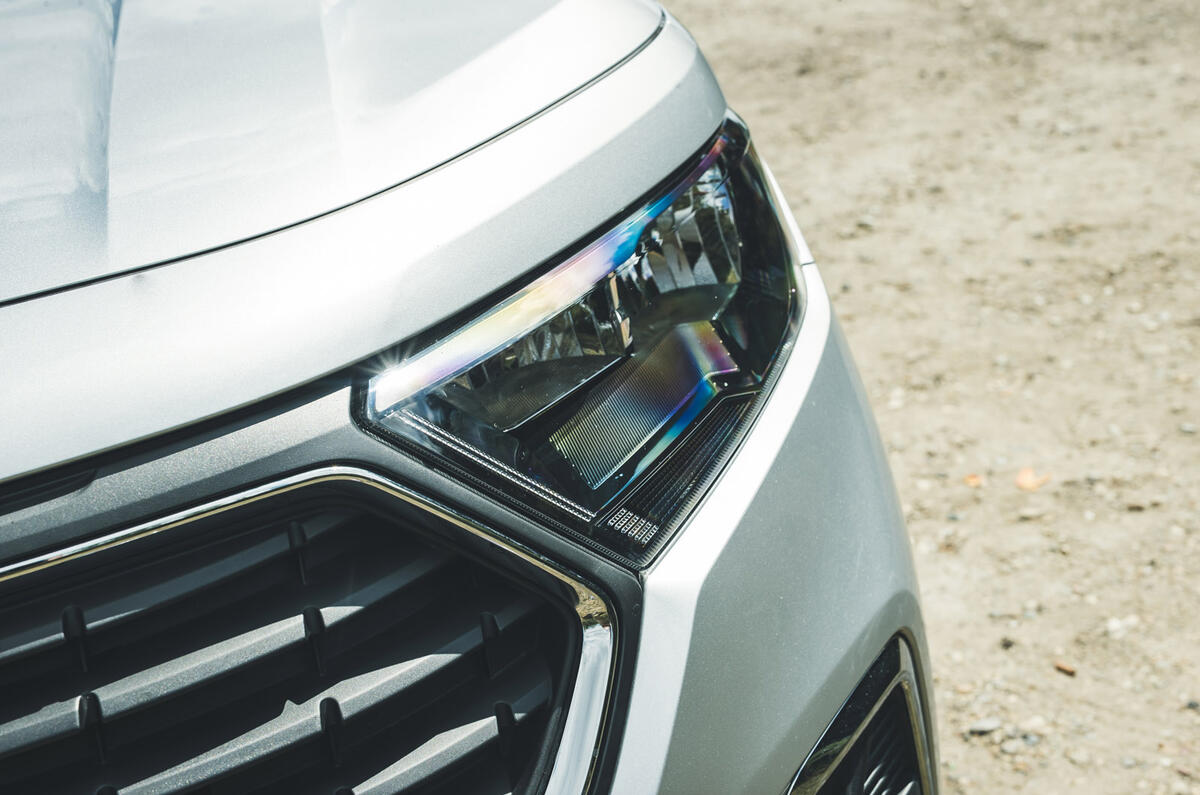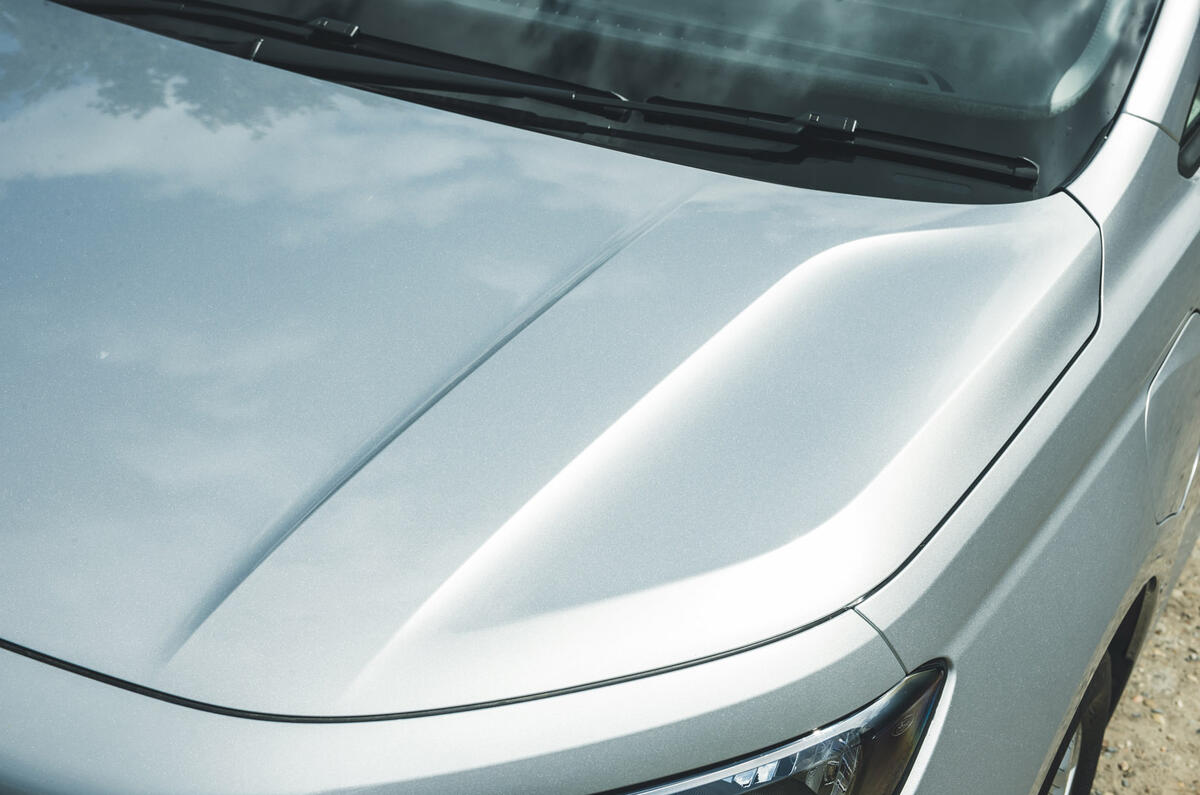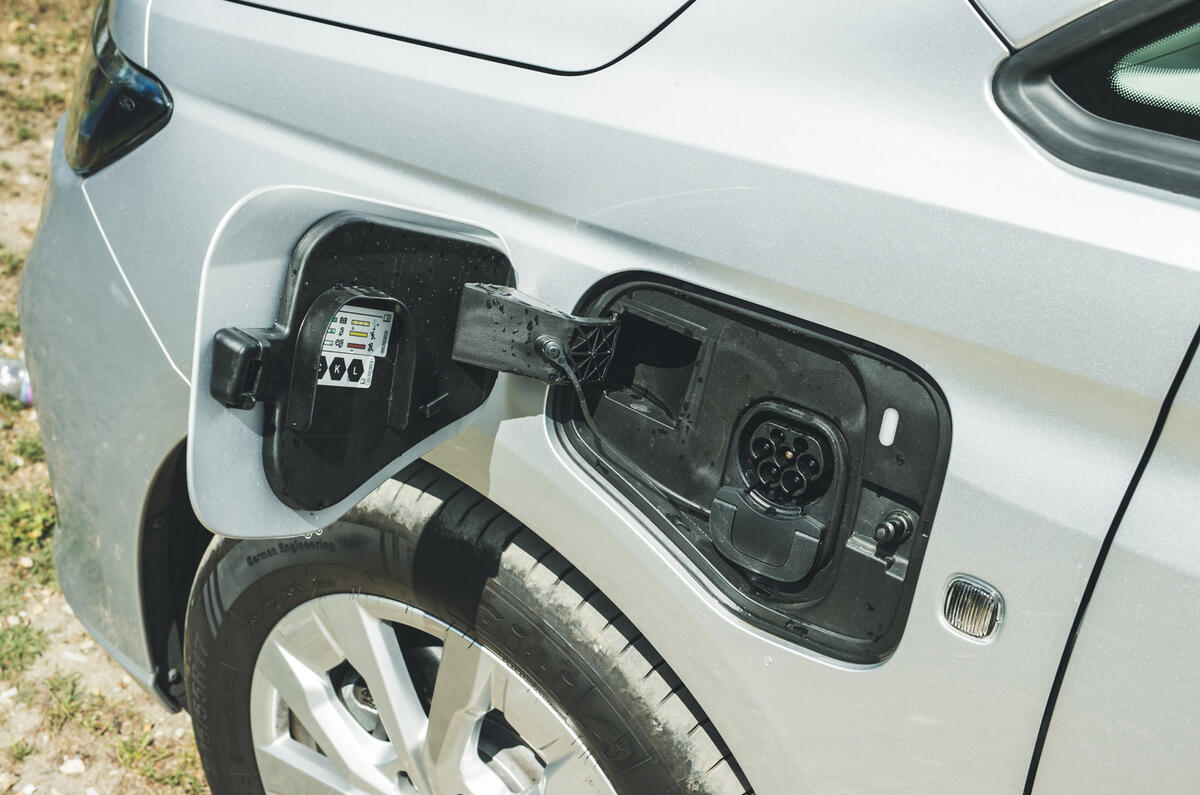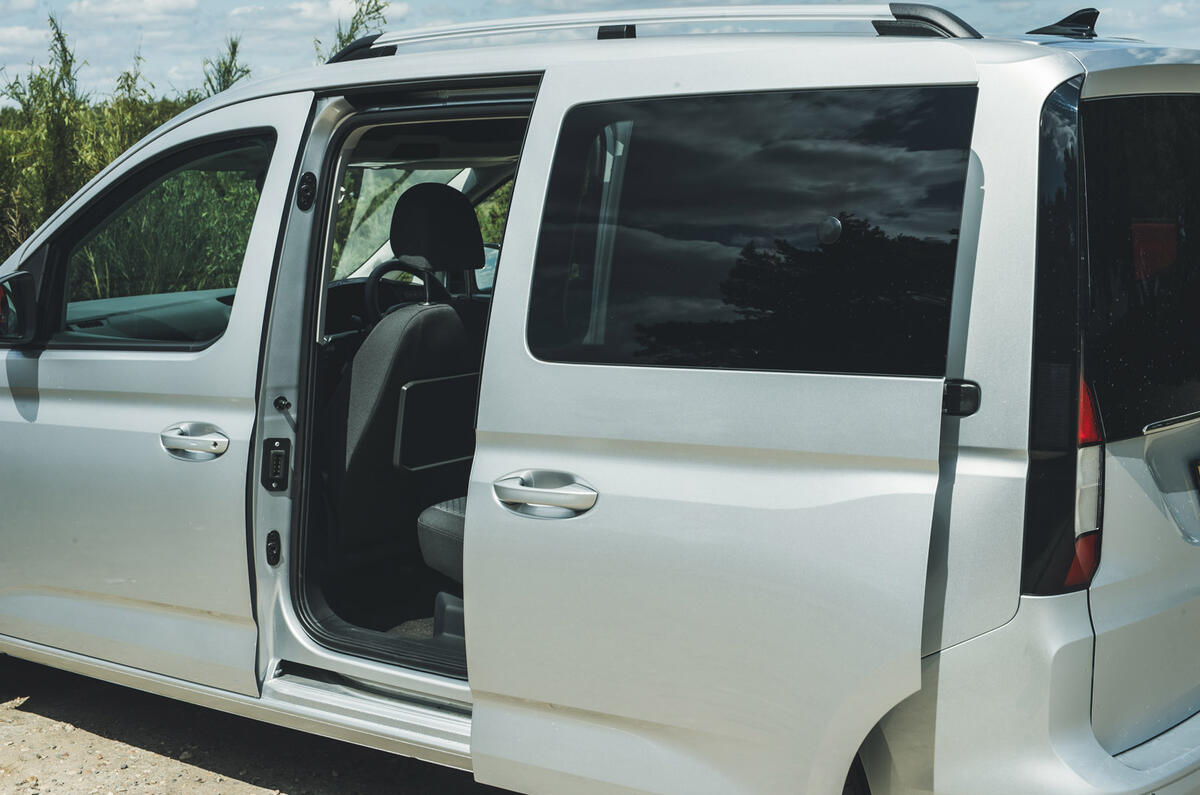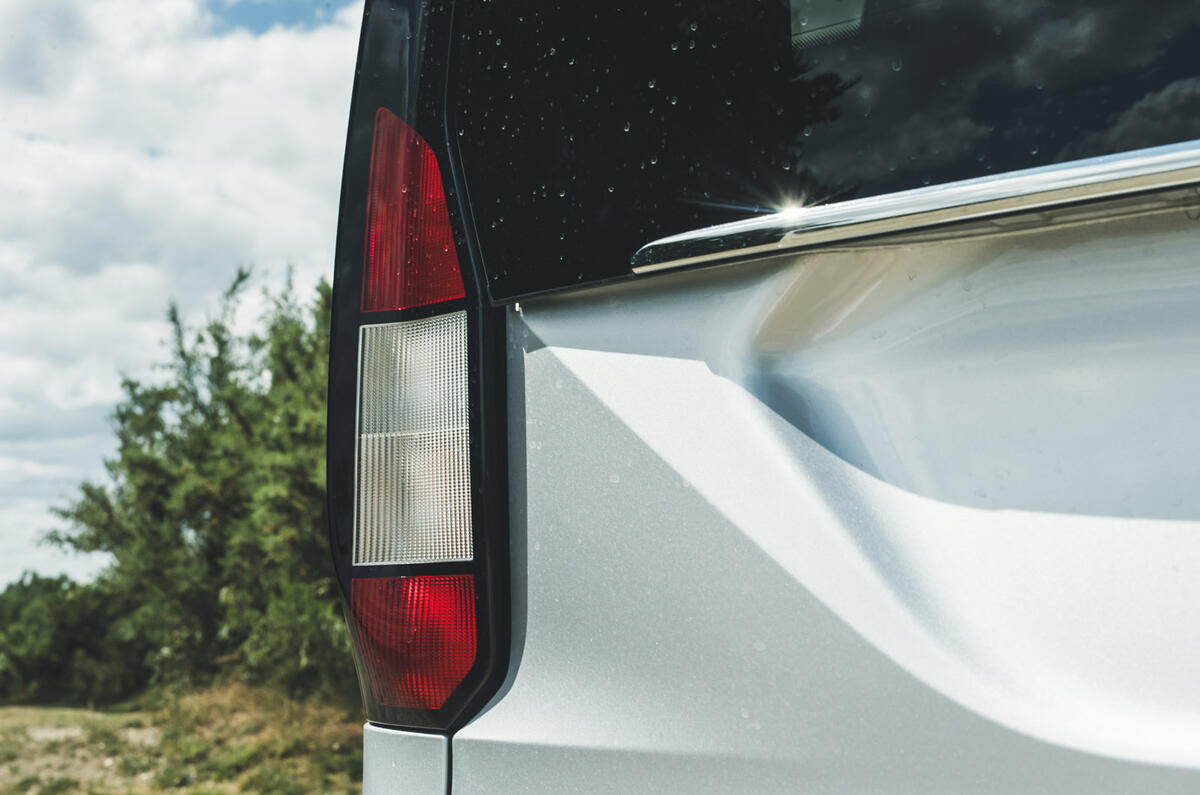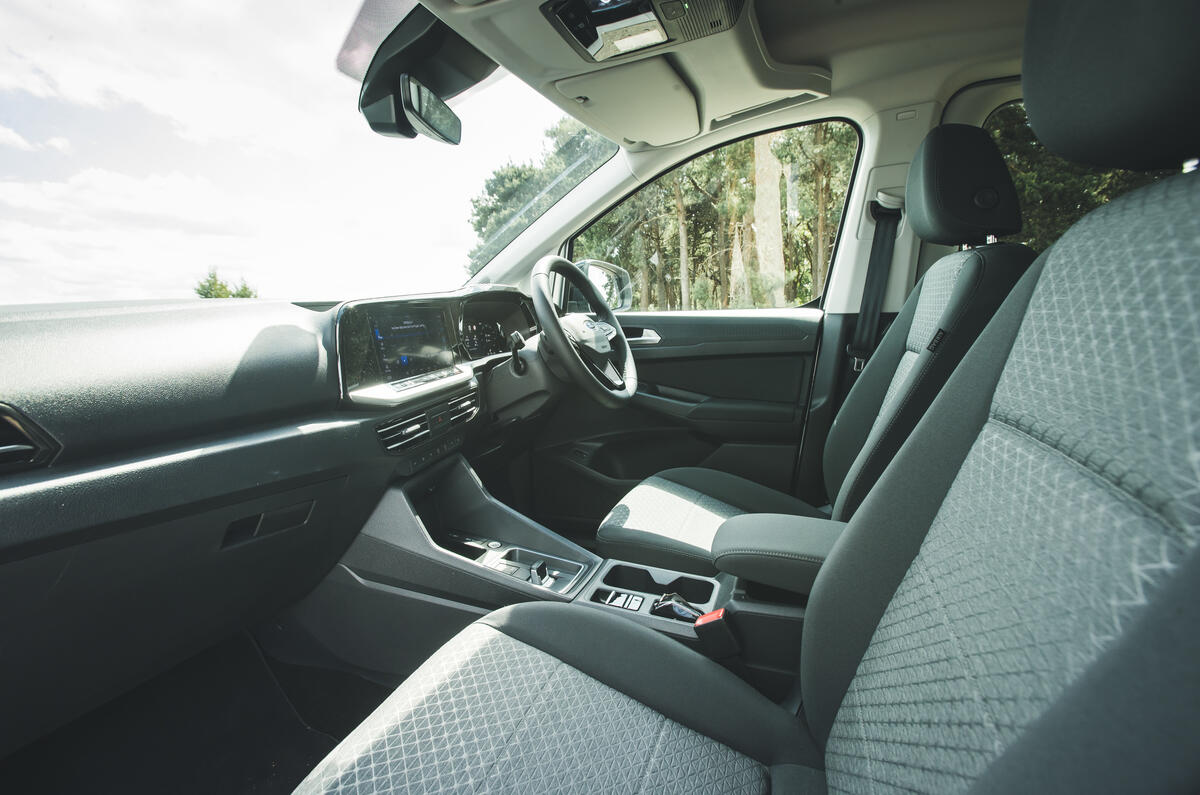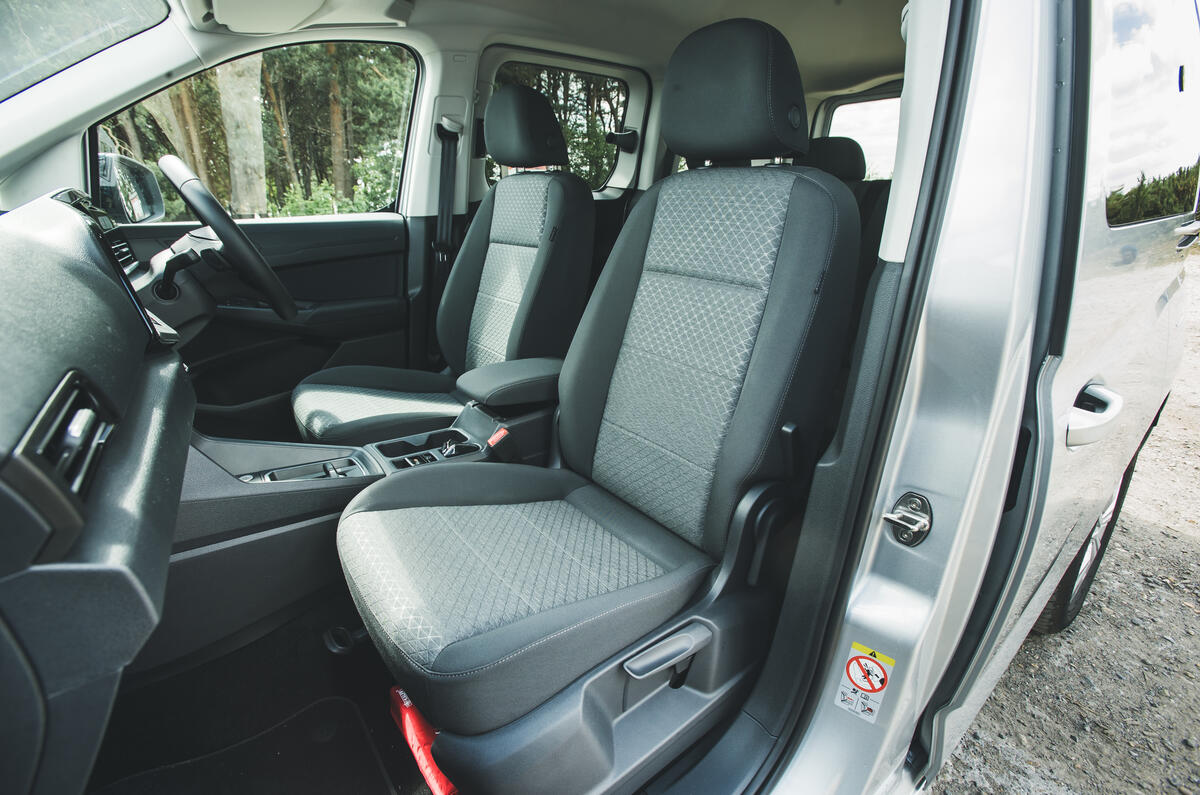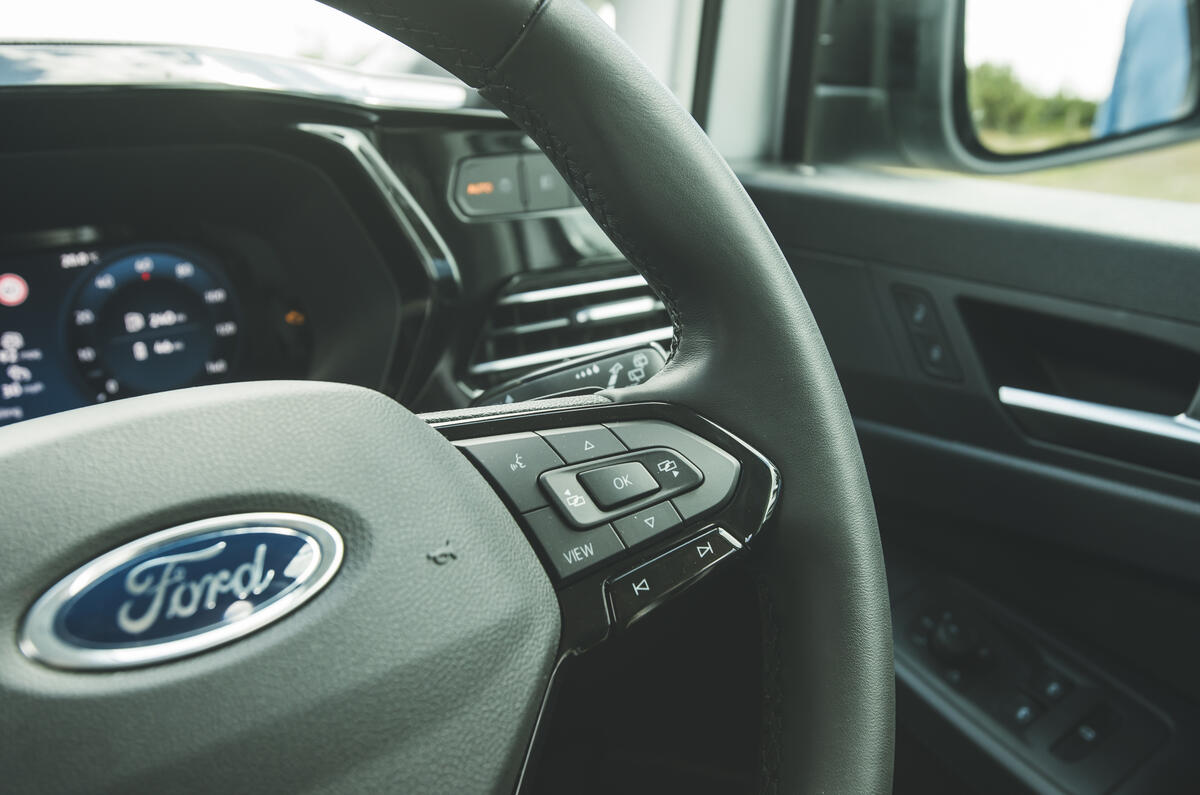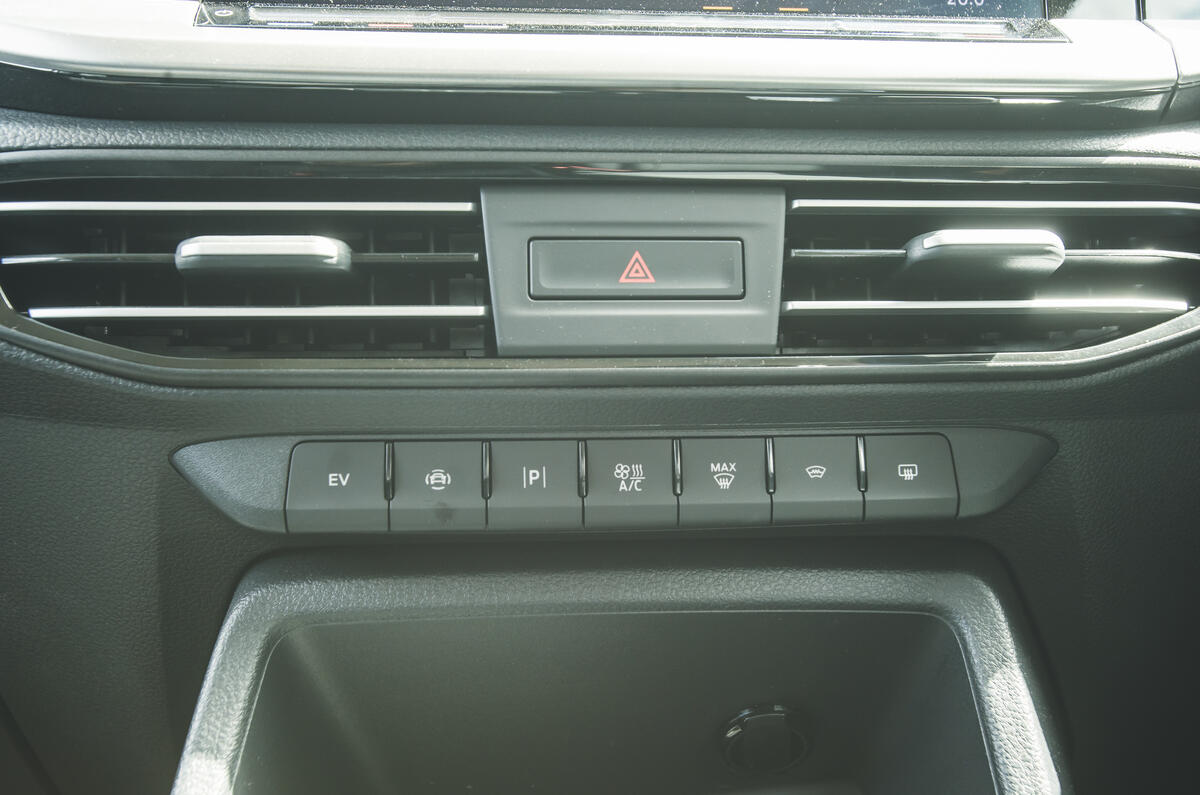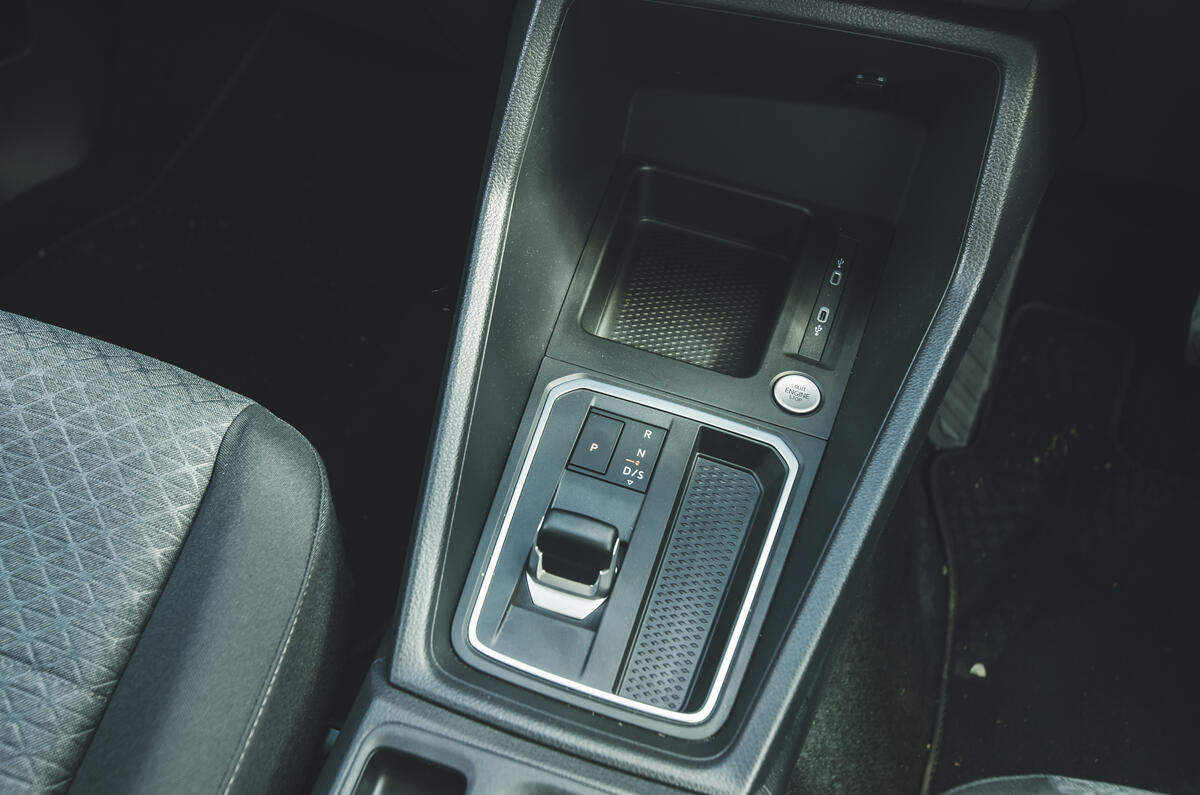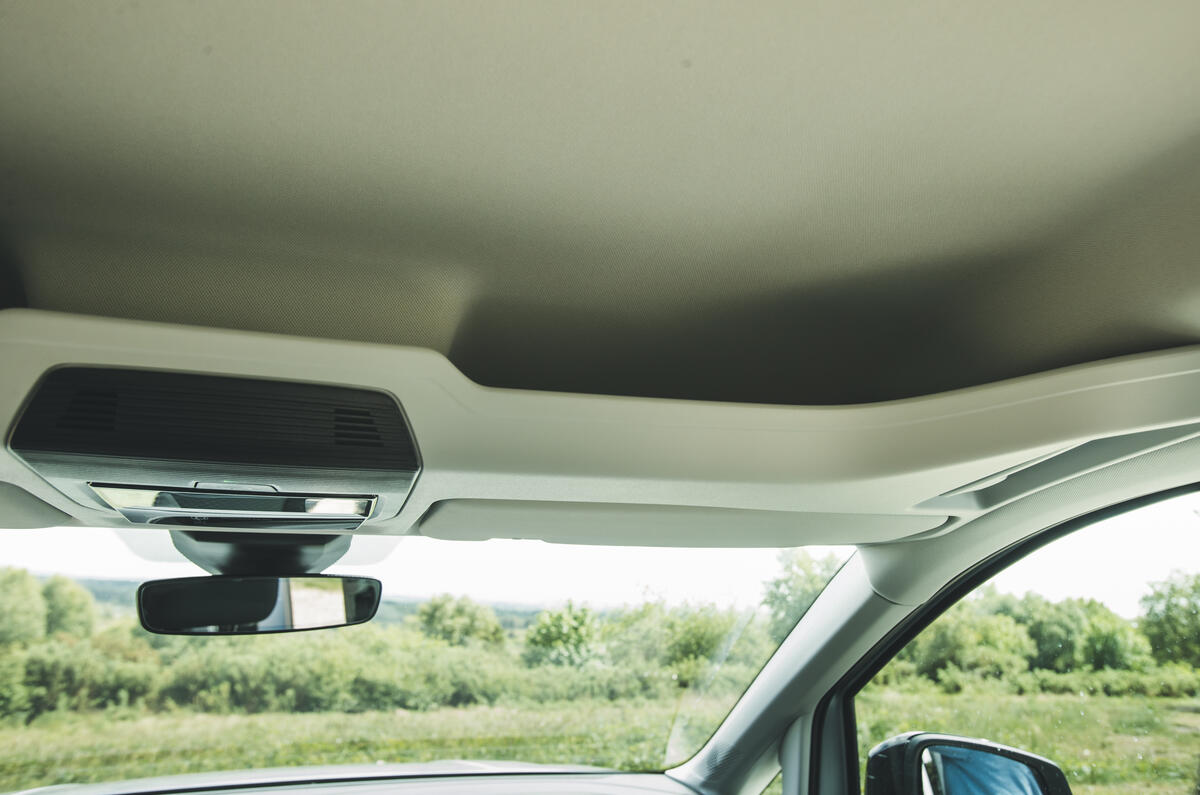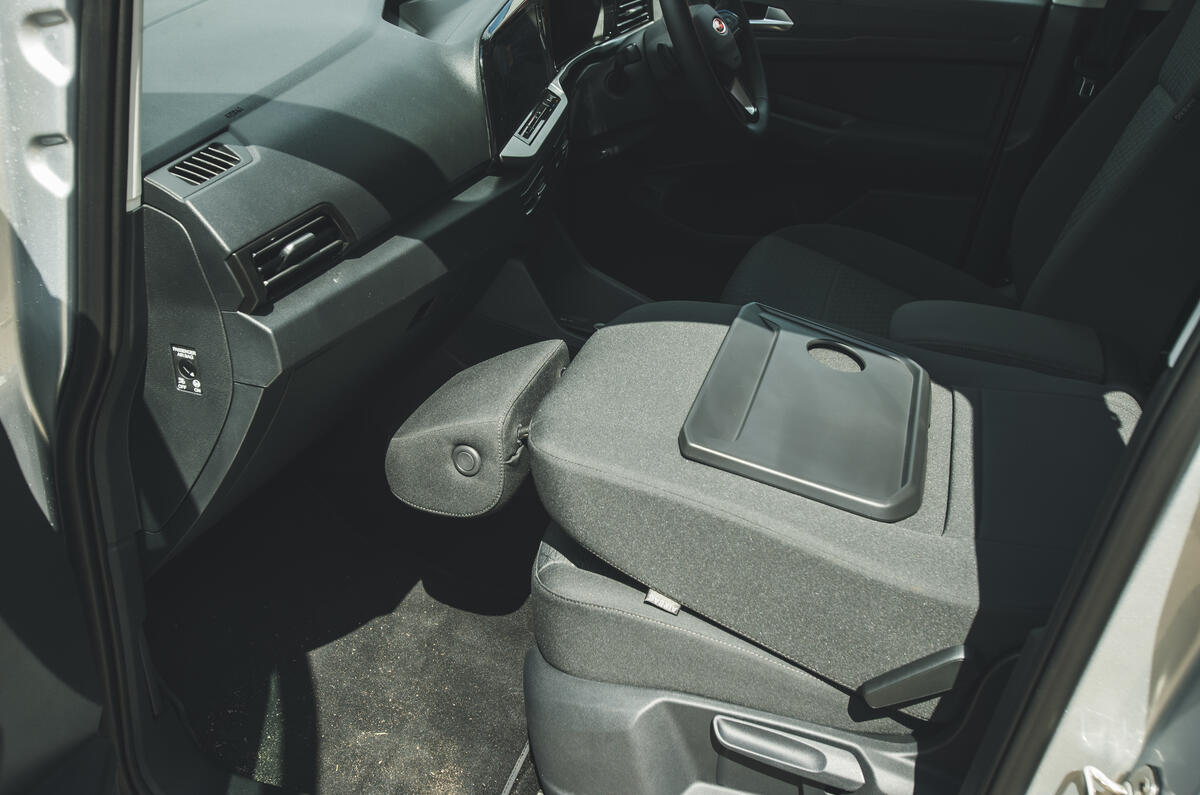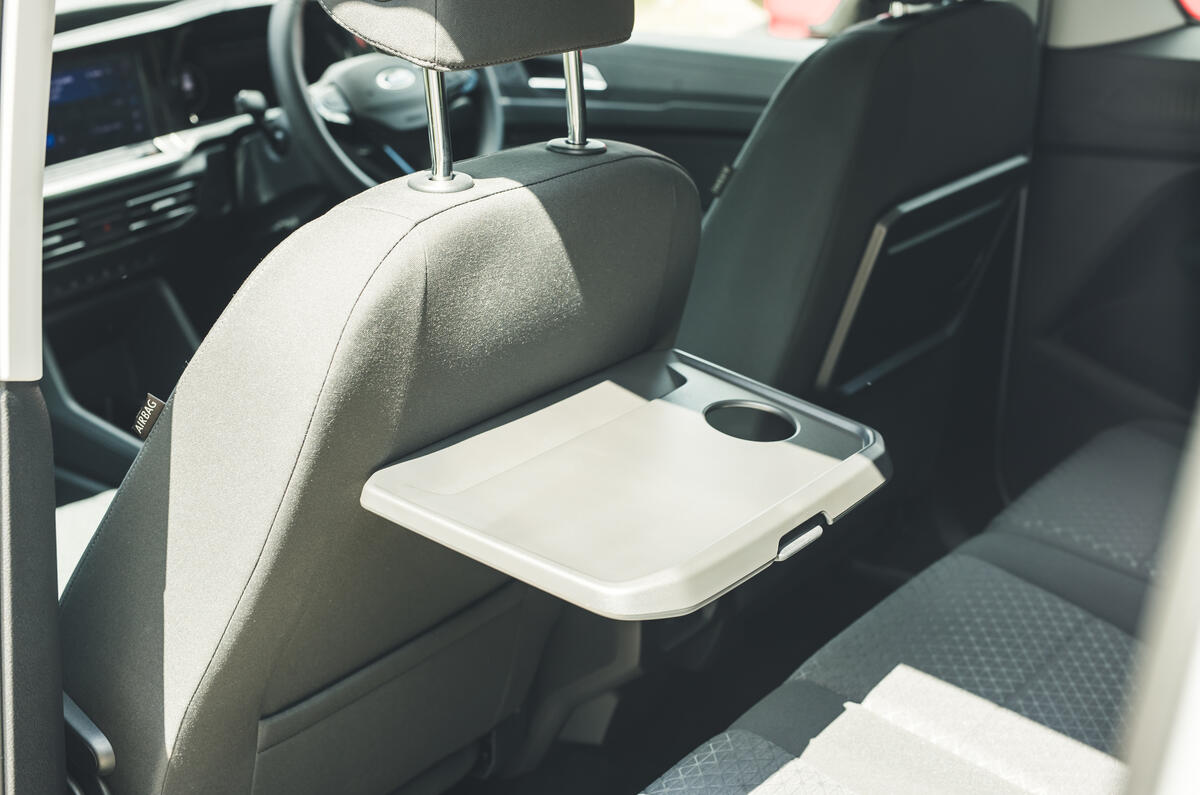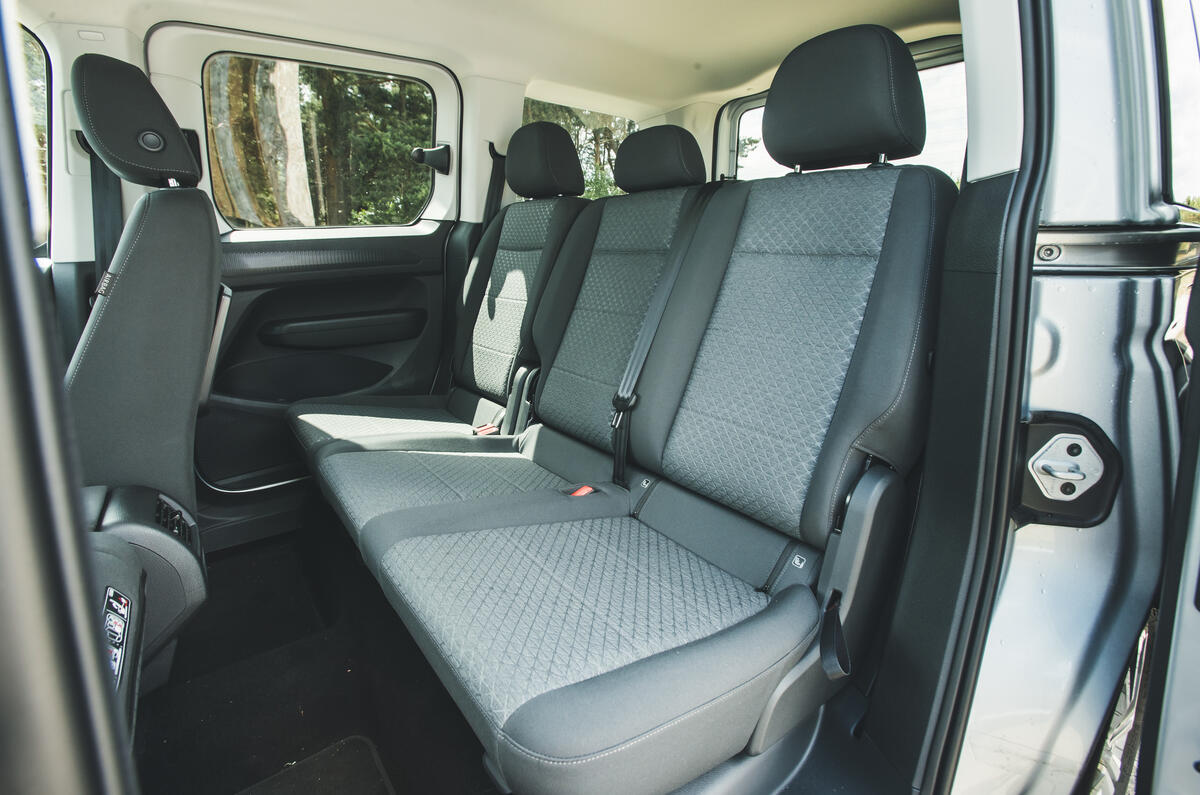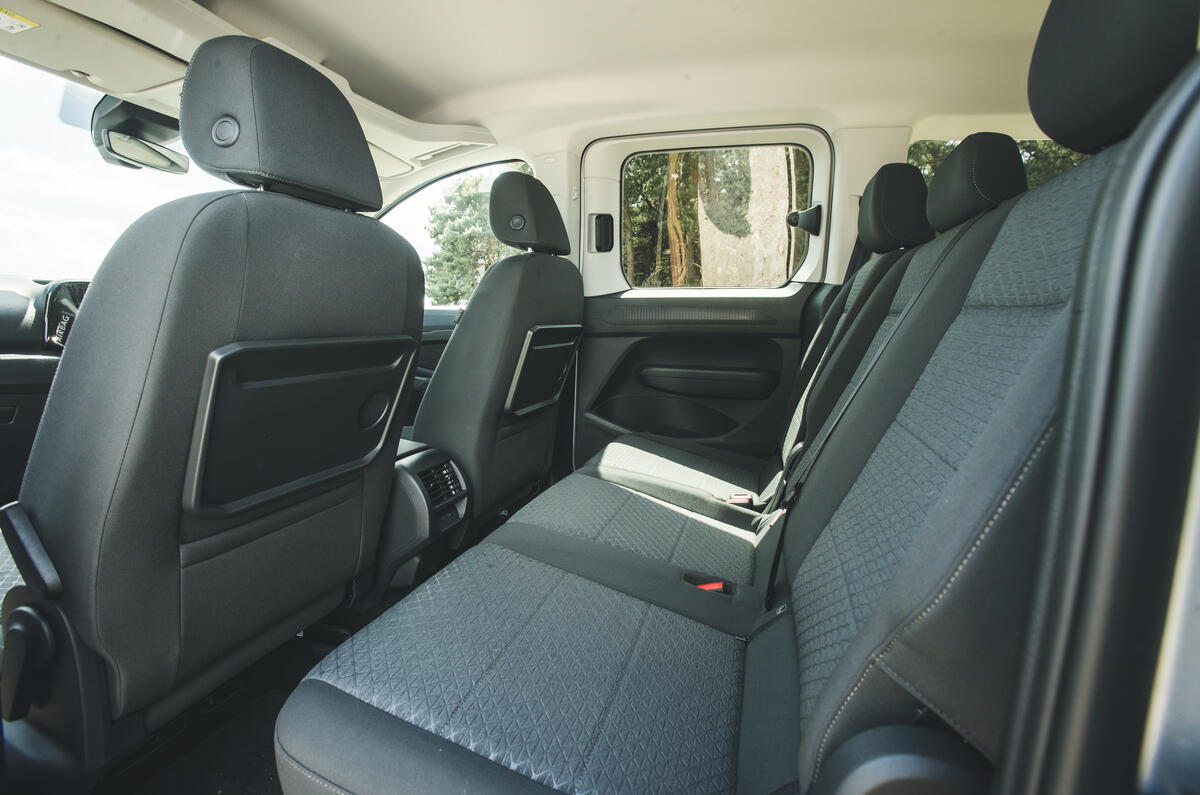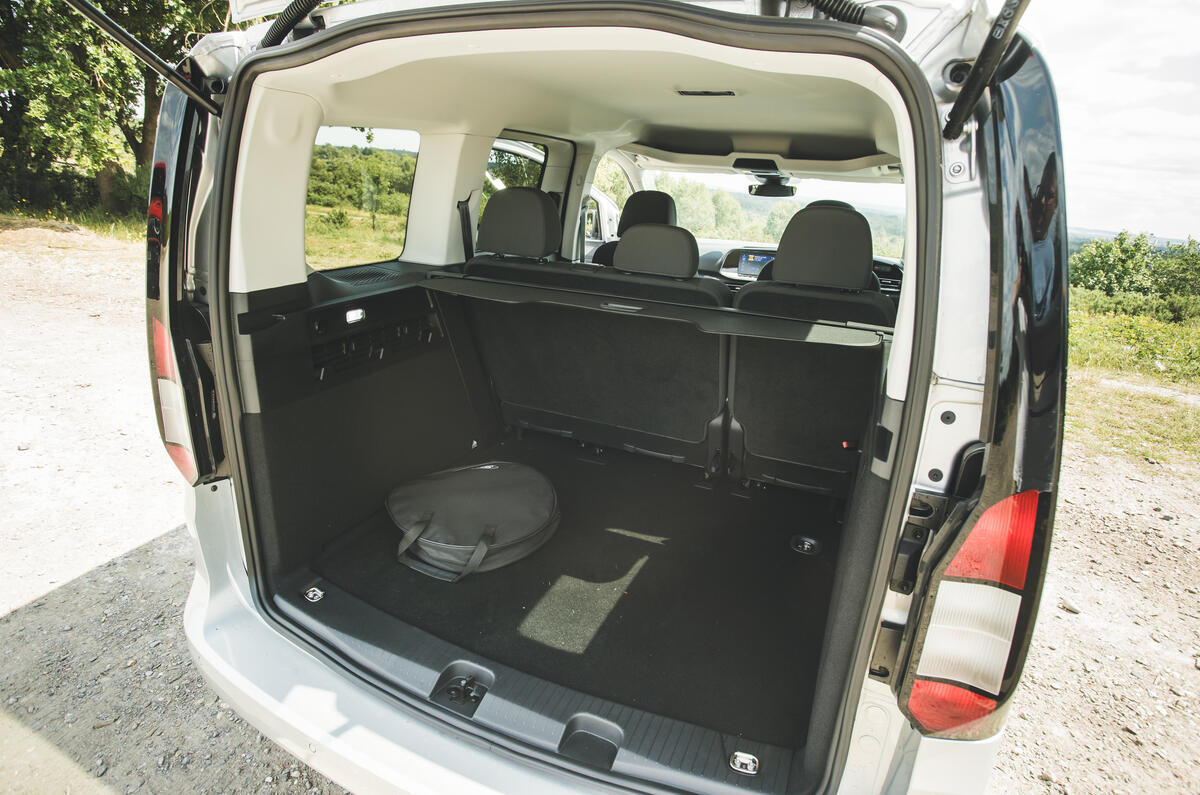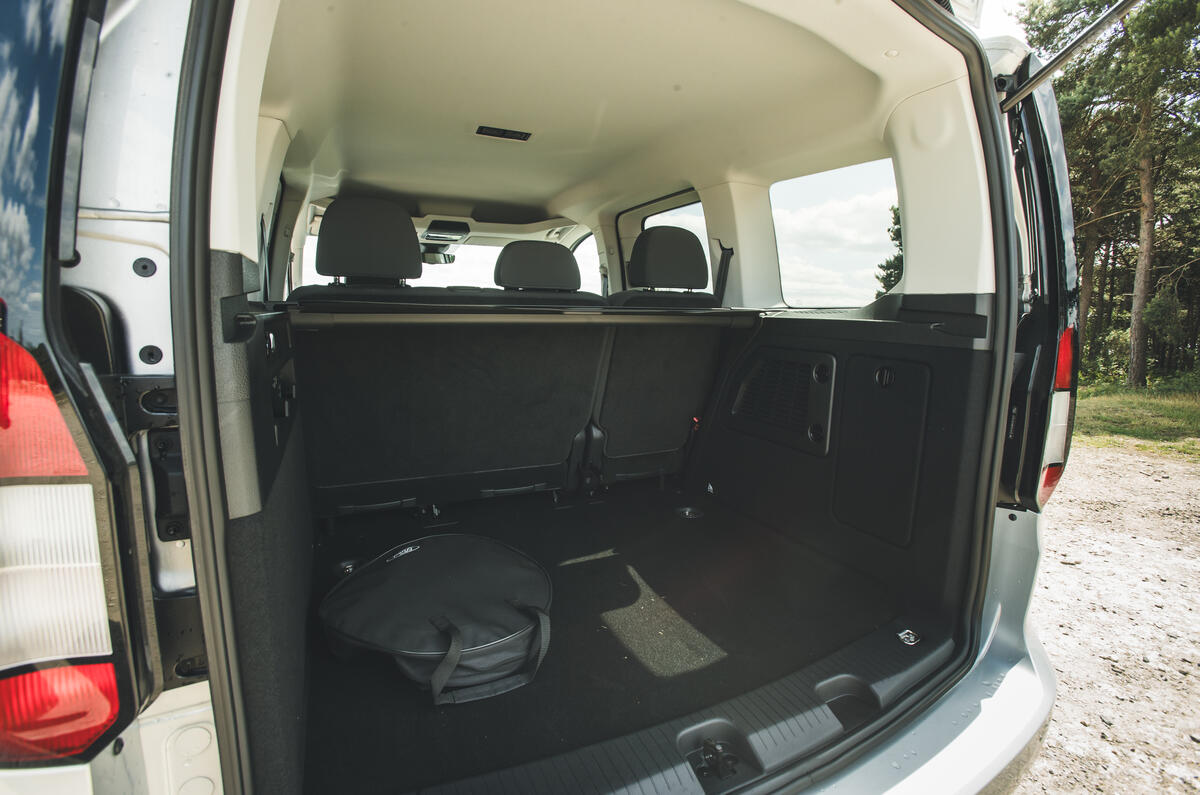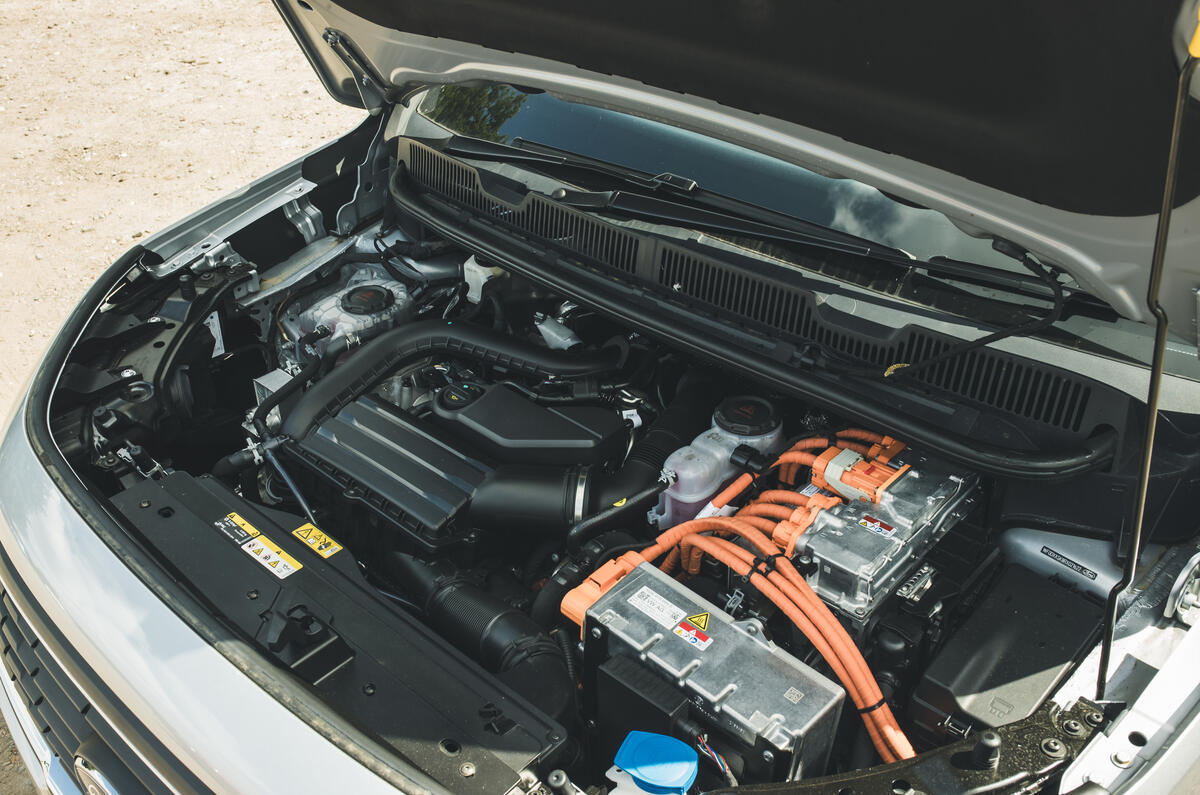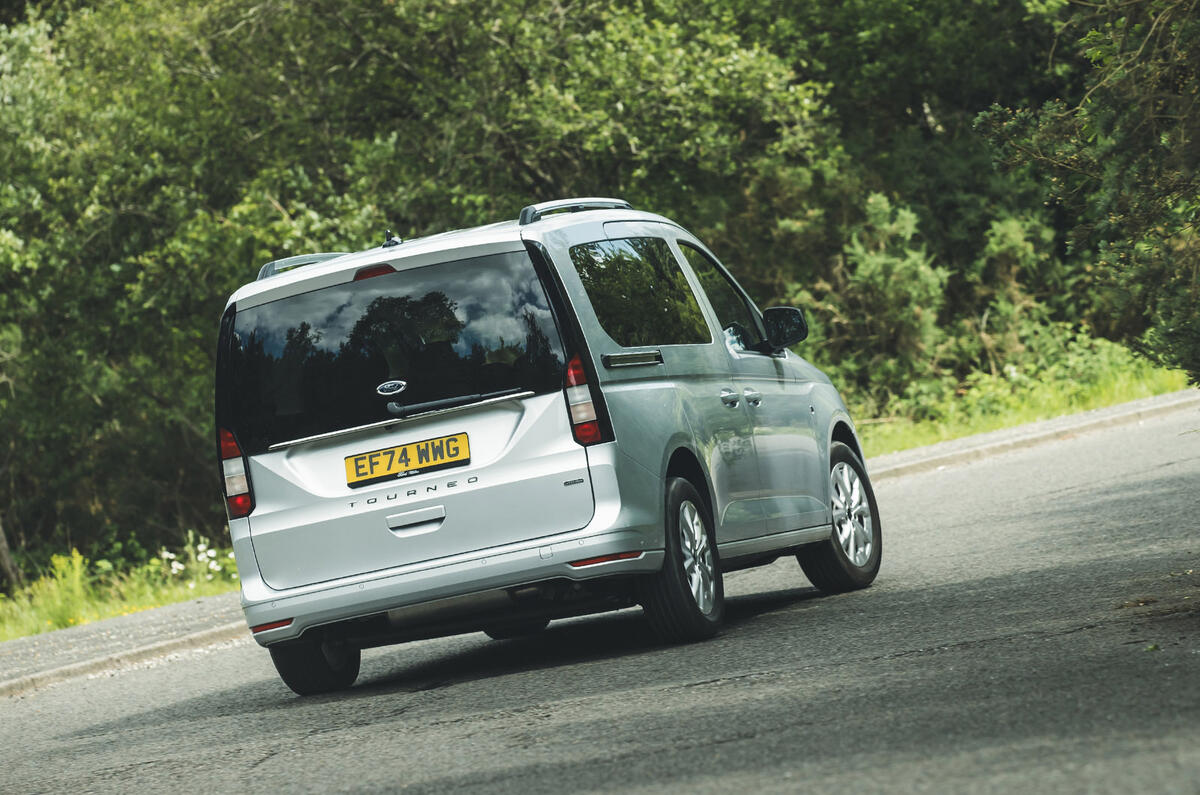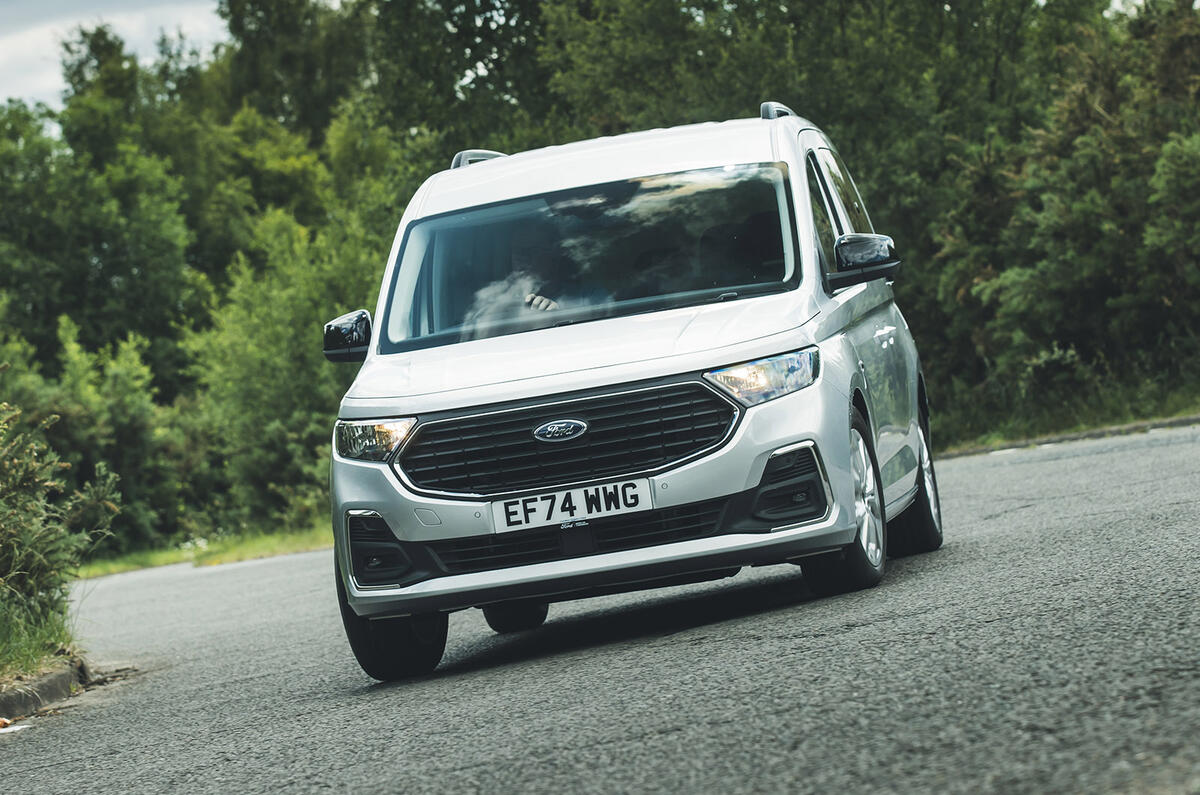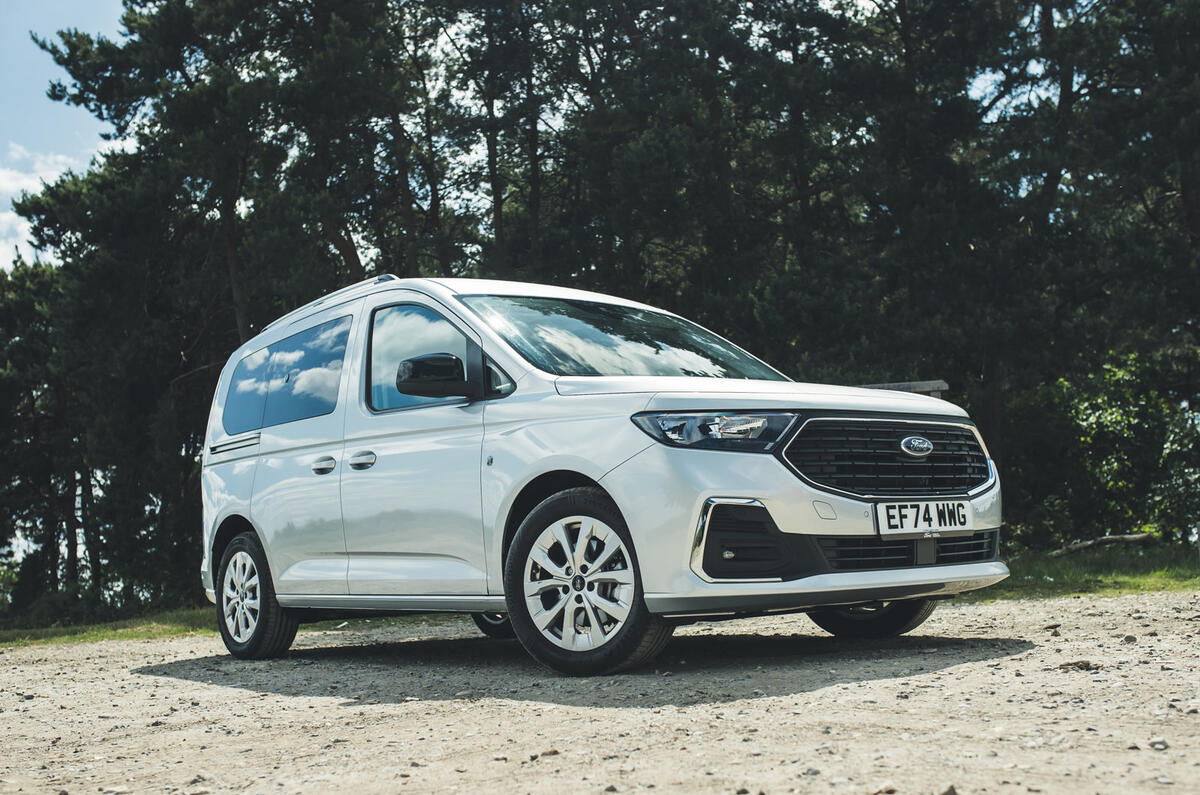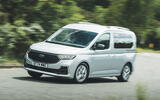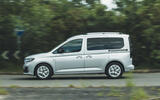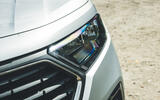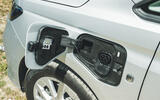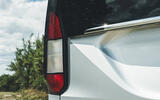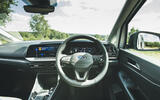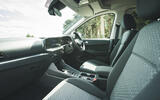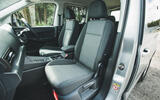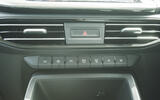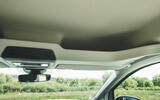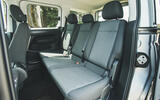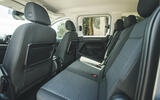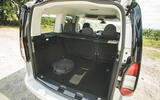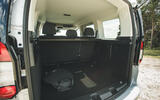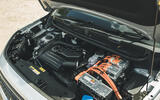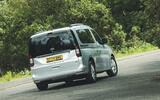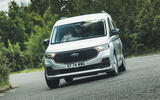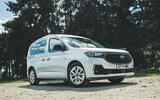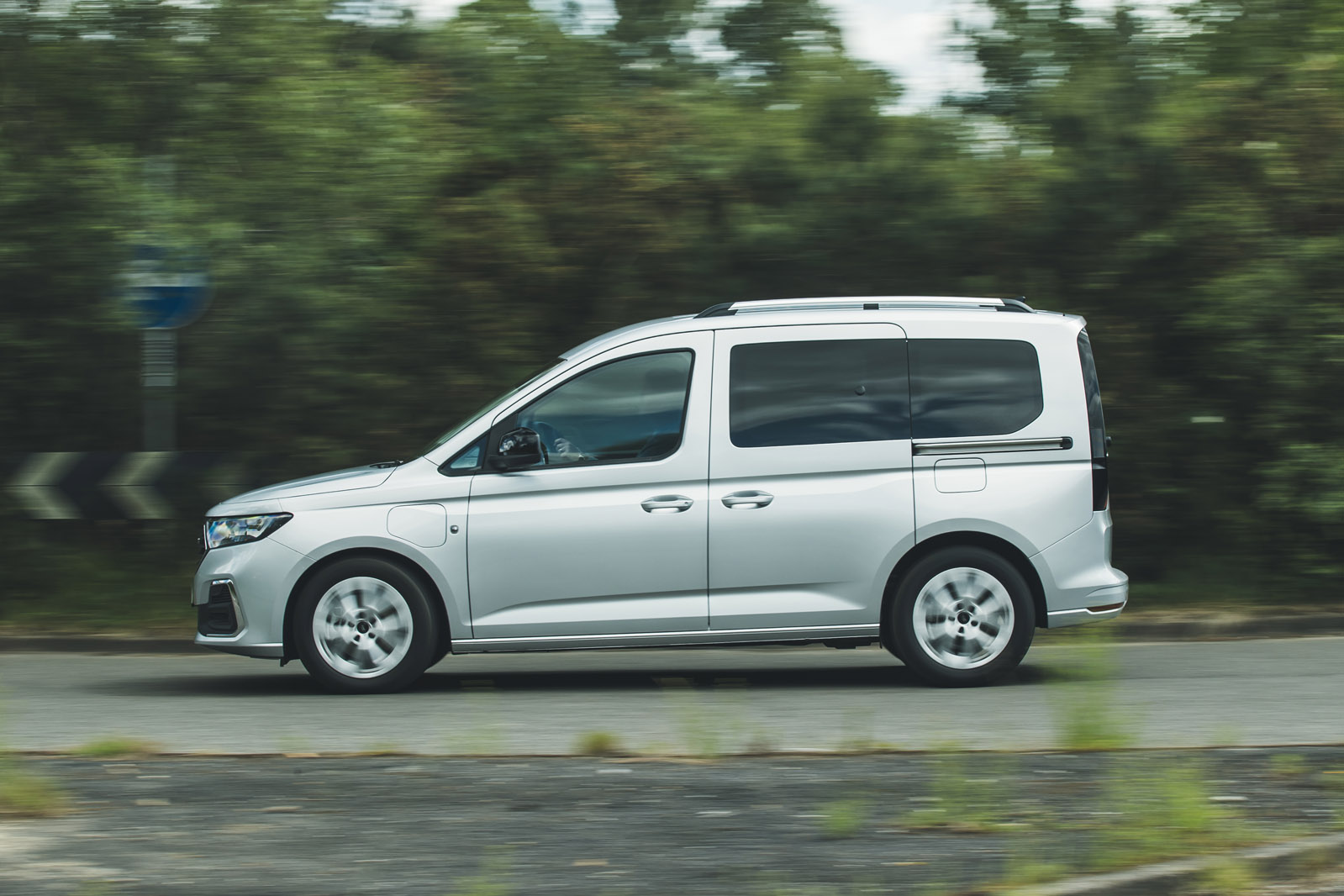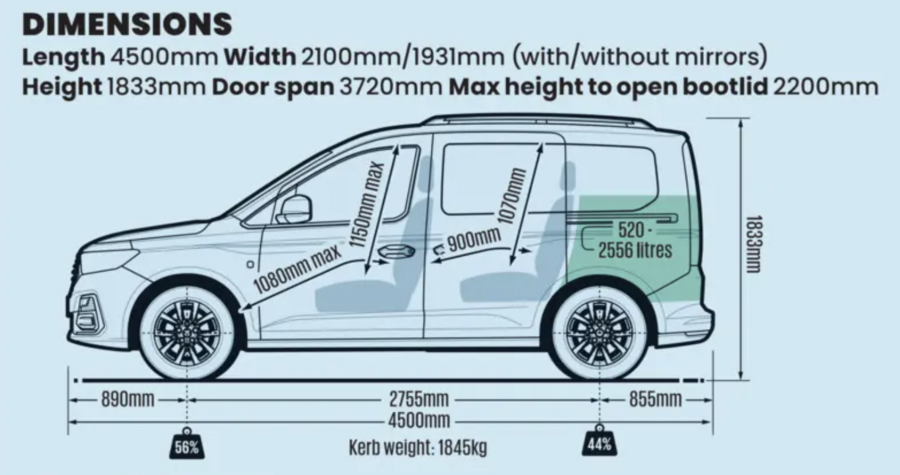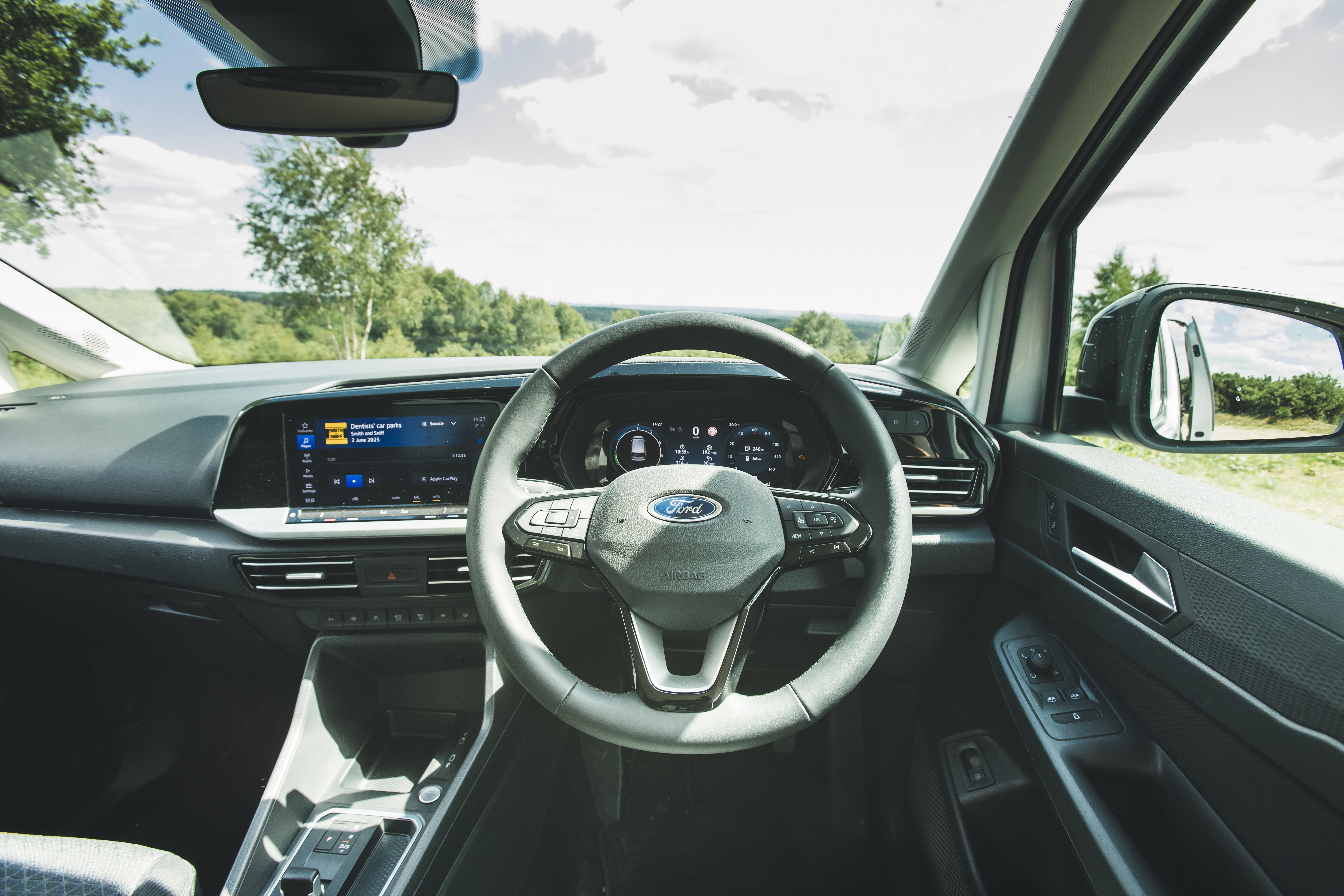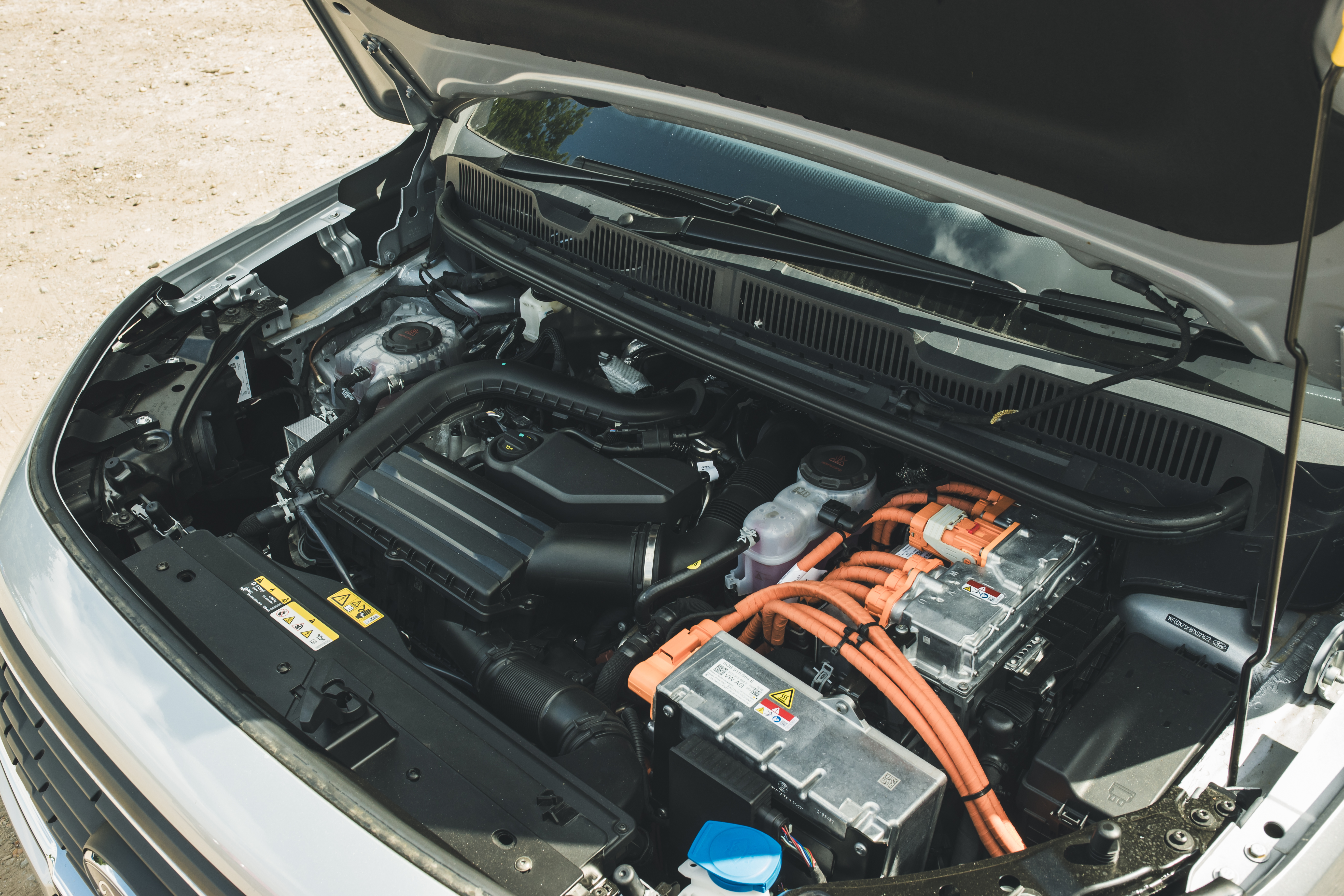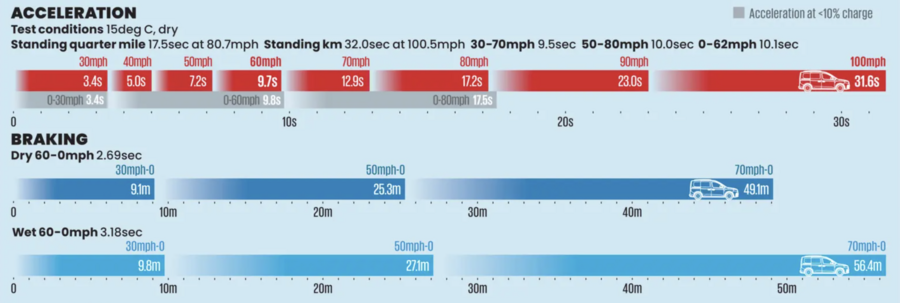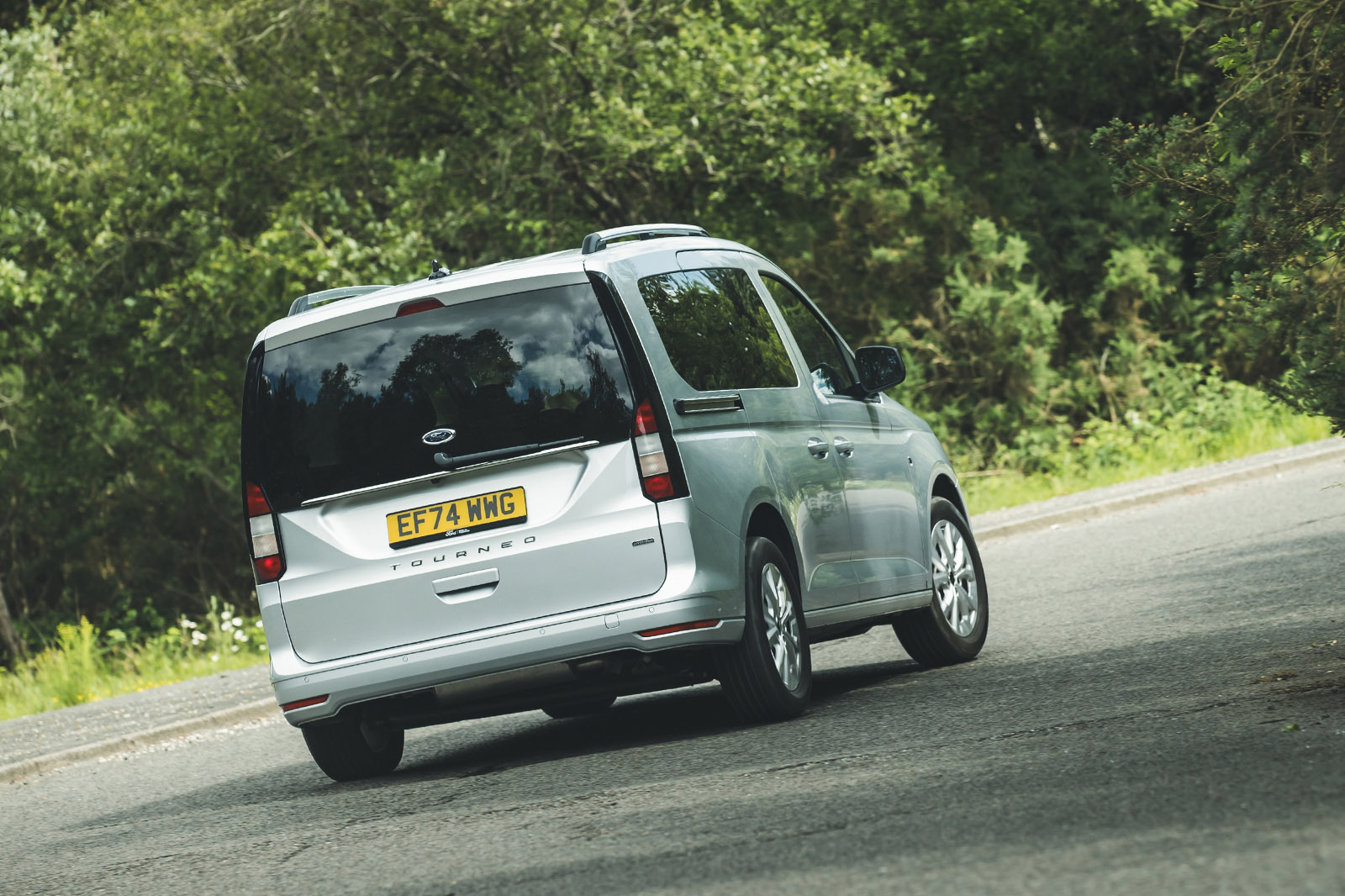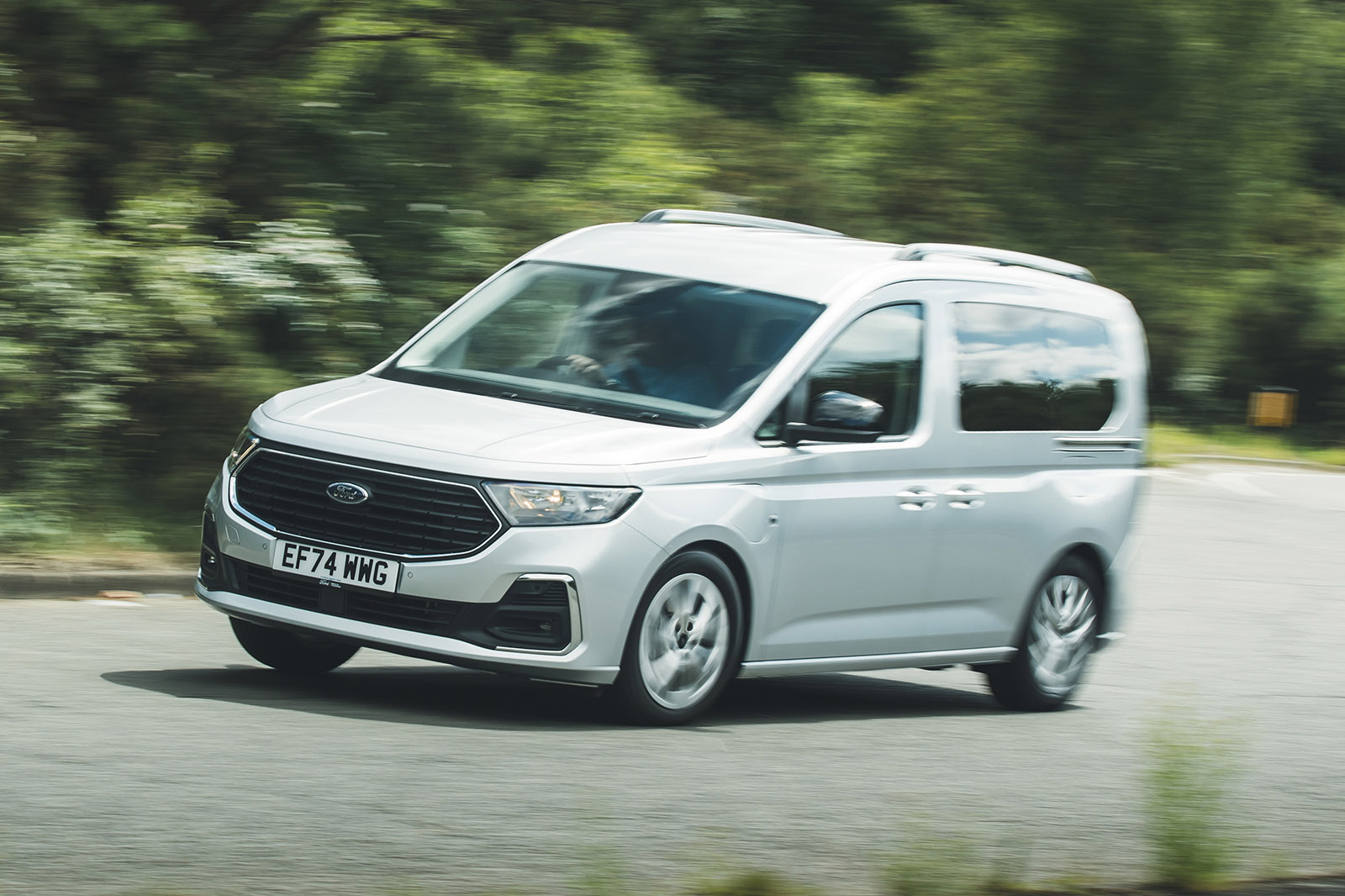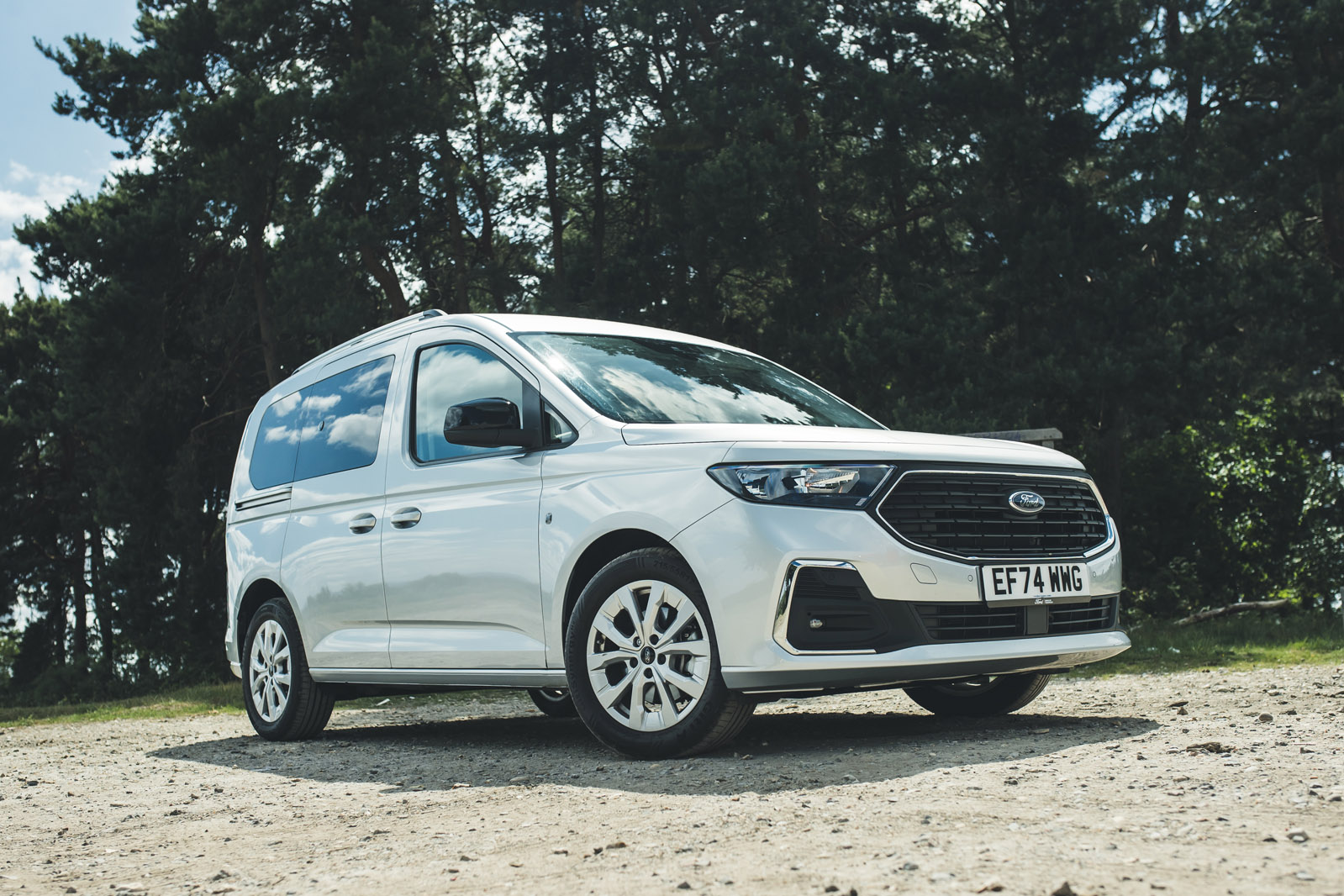Of all the Ford cars made in partnership with VW (the Ranger pick-up, Explorer, Capri and this), the Tourneo Connect looks the least like a Ford – both inside and out.
But for the badge on the steering wheel, this might as well be a VW interior, from door handles to electric window switches to column stalks. There is plenty of substantial feel about the fixtures and fittings, however. It has a few too many shiny mouldings around the dashboard perhaps for any materially plush cabin appeal, though everything looks hardy and feels solid and well secured.
VW’s 10in multimedia touchscreen runs Ford’s own infotainment software, which is easy enough to use. A row of permanent physical shortcut buttons below the screen is a great help in navigating it, making ADAS control toggles quickly accessible and doing the same for powertrain mode selection. Wireless smartphone mirroring is standard, with a device charging pad included on higher-grade Active models.
The car’s boxy profile and high roofline provide an abundance of front head room, even for taller drivers who prefer a higher-set seat, and it’s the same in the rear.
Our test car was a short-wheelbase five-seater. (Seven seats are standard on all long-wheelbase models and an option on all short-wheelbase cars except for SWB PHEVs.) Its second-row chairs can be tumbled forwards and flipped up against the front seatbacks to extend cargo capacity or removed.
Being fairly heavy, they’re too awkward to take out on a whim. But for those occasions when you do want maximum carrying space, their removal opens up more than 2500 litres of capacity even in the SWB car, up to a roofline that grants almost 1.2m of peak loading height. A standard folding front passenger seatback also gives you the option of carrying extra-long loads.
Sliding back seats and some cleverer expandable oddment storage features in the roof and boot sides wouldn’t have gone amiss here. But even without them, the Connect’s huge, tall, straight-sided cargo bay could make what is still a fairly small car remarkably useful.
